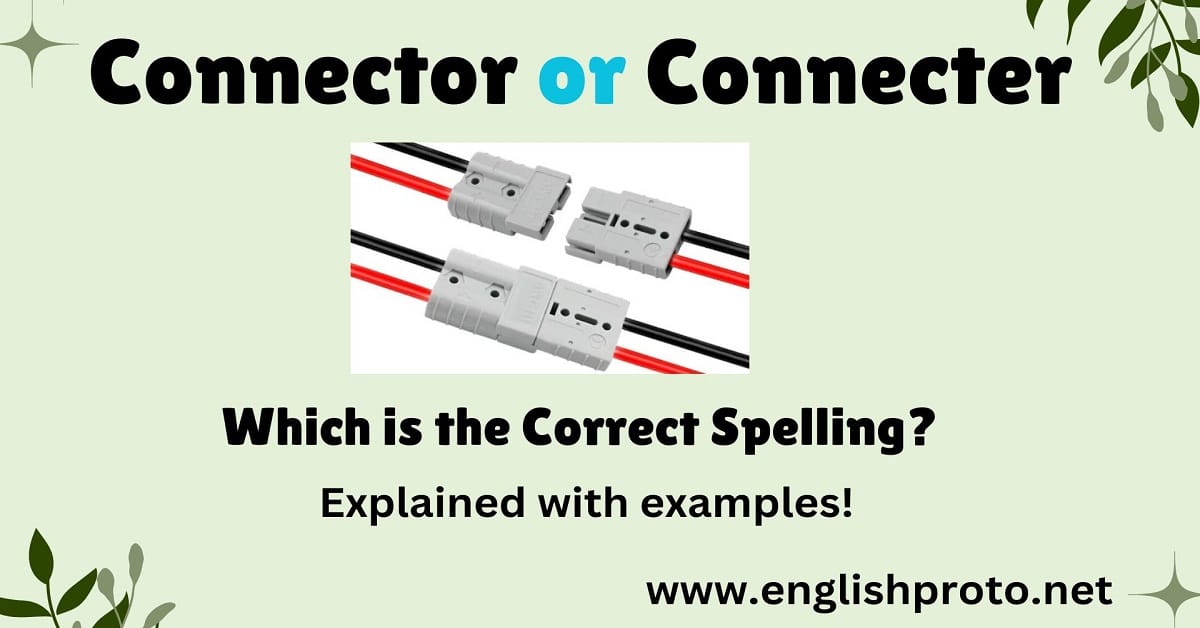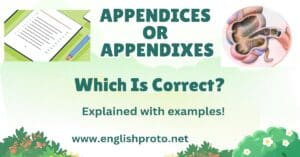Connector or Connecter: Which is the Correct Spelling? Have you ever found yourself wondering which spelling to use, connector or connecter? It’s a small detail, but getting it right can make a big difference in how clear and professional your writing appears.
Whether you’re drafting an email, writing an essay, or preparing a report, using the correct form ensures your message is understood the way you intend it to be. In this article, we’ll explore the differences between these two terms, why they matter, and how you can easily master their usage. Let’s dive in!
Quick Summary
The correct spelling is connector. A connector refers to something that links, joins, or connects two or more elements, whether they are physical, grammatical, or conceptual.
Common contexts include grammar, technology, and general communication. Avoid the incorrect form, connecter, which lacks proper usage and is rarely used in standard English.
⚡ Quick Tip
Always use connector in both formal and informal writing to ensure accuracy and professional presentation.
Reasons for Confusion
The confusion between connector and connecter often arises due to their similar sounds and shared root in the verb connect. Additionally, in some cases, people may simplify complex spellings for ease of use, leading to errors.
Regional influences also play a significant role in shaping spelling patterns, where certain areas may prefer simplified forms of words, contributing to further confusion.
Detailed Explanation
What is a Connector?
A connector serves a pivotal role in linking ideas, words, sentences, or objects together. It plays a critical part in communication, helping maintain flow and coherence, whether in writing or speech. The word can be applied in various contexts:
- Grammatical Connectors: These are words or phrases that link clauses, phrases, or sentences together to establish logical relationships.
Example: “She was tired and decided to go to bed early.” - Physical Connectors: These refer to devices or components that connect objects or systems.
Example: “The USB port acts as a connector between the computer and the printer.” - Conceptual Connectors: These represent abstract links between ideas or concepts, making them indispensable in academic or intellectual discourse.
Example: “The introduction should serve as a connector between the thesis and the body paragraphs.”
When to Use “Connector”
Connector is used in both everyday and specialized contexts. It is essential for maintaining clarity and structure in both professional and casual communication. Here’s a breakdown of scenarios where connector fits perfectly:
- In Technical Writing: Engineers and technical professionals frequently use connector to describe physical or functional links.
Example: “The electrical circuit requires a connector for seamless current flow.” - In Grammatical Context: In language and linguistics, connector ensures sentence cohesion.
Example: “The essay flows well due to the appropriate use of connectors.” - In Conceptual or Abstract Contexts: Connector is used when referring to ideas, such as in academic or philosophical writing.
Example: “The conclusion acts as a conceptual connector between the findings and the next research question.”
How Using a Connector Improves Communication
A connector improves communication by tying together ideas, whether they are tangible objects or abstract concepts. Its correct usage ensures that readers or listeners can easily follow and understand the intended message. Without it, ideas can appear disjointed or confusing, hindering the reader’s or listener’s comprehension.
Common Errors
Incorrect Variations and Why They Should Be Avoided
- Connecter – Incorrect spelling. There is no standard usage for this form in English.
- Connect – A root verb, but insufficient on its own for connecting multiple elements within a sentence.
- Connector – The correct form for expressing the concept of linking or joining.
Avoiding these incorrect forms is critical in professional writing, academic papers, technical documentation, and formal communications.
Synonyms or Alternatives
If context allows flexibility, there are alternatives to connector:
- Link – Often used in less formal settings when referring to connections between items.
Example: “Use a link to navigate between pages.” - Bridge – Applied in a more abstract sense, especially in discussions about connections between different concepts or disciplines.
Example: “The introduction serves as a bridge between theory and practice.” - Interface – Often used in technology or systems, especially when describing a point of connection between two systems.
Example: “The software interface acts as a connector between user inputs and database operations.”
Examples in Sentences
To solidify the understanding, here are practical examples demonstrating the proper use of connector:
- “The sentence flows smoothly because of the effective use of connectors.”
- “A connector cable is essential for charging the device.”
- “In academic writing, a connector helps to create a logical flow of ideas.”
Origins and History
The word connector has roots in the Latin term connectere, which means “to bind or fasten together.” This etymology has persisted through time, providing a consistent foundation for its usage across various domains, ranging from linguistic structures to engineering and technology. Over centuries, its meaning has evolved slightly, but the essence of connecting remains central to its definition.
Conclusion: Connector or Connecter
In conclusion, connector is the correct spelling, and its accurate use is essential for effective communication. Whether in formal writing, technical documentation, or day-to-day interactions, using connector ensures clarity and professionalism.
Avoiding common errors like connecter is crucial for maintaining precise and polished communication. By understanding its role and application, writers and professionals can confidently enhance their communication skills and present ideas cohesively.



